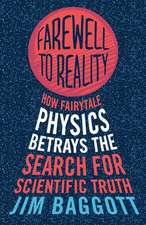Explaining Photosynthesis: Models of Biochemical Mechanisms, 1840-1960: History, Philosophy and Theory of the Life Sciences, cartea 8
Autor Kärin Nickelsenen Limba Engleză Hardback – 27 iun 2015
Photosynthesis makes for an instructive example. The first tentative ideas were developed by organic chemists around 1840, while by 1960 an elaborate proposal at a molecular level, for both light and dark reactions, was established. The latter is still assumed to be basically correct today. The author makes a persuasive case for a historically informed philosophy of science, especially regarding methodology, and advocates a history of science whose narrative deploys philosophical approaches and categories. She shows how scientists’ attempts to formulate, justify, modify, confirm or criticize their models are best interpreted as series of coordinated research actions, dependent on a network of super- and subordinated epistemic goals, and guided by recurrent heuristic strategies.
With dedicated chapters on key figures such as Otto Warburg, who borrowed epistemic fundamentals from other disciplines to facilitate his own work on photosynthesis, and on more general topics relating to the development of the field after Warburg, this new work is both a philosophical reflection on the nature of scientific enquiry and a detailed history of the processes behind one of science’s most important discoveries.
| Toate formatele și edițiile | Preț | Express |
|---|---|---|
| Paperback (1) | 699.93 lei 6-8 săpt. | |
| SPRINGER NETHERLANDS – 23 oct 2016 | 699.93 lei 6-8 săpt. | |
| Hardback (1) | 706.30 lei 6-8 săpt. | |
| SPRINGER NETHERLANDS – 27 iun 2015 | 706.30 lei 6-8 săpt. |
Din seria History, Philosophy and Theory of the Life Sciences
- 15%
 Preț: 642.83 lei
Preț: 642.83 lei - 18%
 Preț: 735.84 lei
Preț: 735.84 lei - 15%
 Preț: 644.95 lei
Preț: 644.95 lei -
 Preț: 349.62 lei
Preț: 349.62 lei - 18%
 Preț: 1246.15 lei
Preț: 1246.15 lei - 18%
 Preț: 785.55 lei
Preț: 785.55 lei -
 Preț: 398.63 lei
Preț: 398.63 lei - 15%
 Preț: 701.06 lei
Preț: 701.06 lei -
 Preț: 389.11 lei
Preț: 389.11 lei - 15%
 Preț: 651.02 lei
Preț: 651.02 lei -
 Preț: 391.22 lei
Preț: 391.22 lei - 15%
 Preț: 646.43 lei
Preț: 646.43 lei - 24%
 Preț: 590.17 lei
Preț: 590.17 lei - 15%
 Preț: 644.49 lei
Preț: 644.49 lei - 18%
 Preț: 1120.05 lei
Preț: 1120.05 lei - 15%
 Preț: 583.78 lei
Preț: 583.78 lei - 5%
 Preț: 1103.39 lei
Preț: 1103.39 lei -
 Preț: 438.69 lei
Preț: 438.69 lei - 15%
 Preț: 693.57 lei
Preț: 693.57 lei - 15%
 Preț: 638.57 lei
Preț: 638.57 lei - 5%
 Preț: 906.63 lei
Preț: 906.63 lei - 15%
 Preț: 692.09 lei
Preț: 692.09 lei -
 Preț: 353.99 lei
Preț: 353.99 lei - 18%
 Preț: 949.23 lei
Preț: 949.23 lei - 18%
 Preț: 735.21 lei
Preț: 735.21 lei - 18%
 Preț: 725.75 lei
Preț: 725.75 lei - 18%
 Preț: 792.19 lei
Preț: 792.19 lei -
 Preț: 357.63 lei
Preț: 357.63 lei - 24%
 Preț: 713.95 lei
Preț: 713.95 lei -
 Preț: 354.38 lei
Preț: 354.38 lei - 18%
 Preț: 735.38 lei
Preț: 735.38 lei
Preț: 706.30 lei
Preț vechi: 830.95 lei
-15% Nou
Puncte Express: 1059
Preț estimativ în valută:
135.17€ • 139.64$ • 112.49£
135.17€ • 139.64$ • 112.49£
Carte tipărită la comandă
Livrare economică 25 martie-08 aprilie
Preluare comenzi: 021 569.72.76
Specificații
ISBN-13: 9789401795814
ISBN-10: 9401795819
Pagini: 349
Ilustrații: X, 349 p. 62 illus., 6 illus. in color.
Dimensiuni: 155 x 235 x 25 mm
Greutate: 0.68 kg
Ediția:2015
Editura: SPRINGER NETHERLANDS
Colecția Springer
Seria History, Philosophy and Theory of the Life Sciences
Locul publicării:Dordrecht, Netherlands
ISBN-10: 9401795819
Pagini: 349
Ilustrații: X, 349 p. 62 illus., 6 illus. in color.
Dimensiuni: 155 x 235 x 25 mm
Greutate: 0.68 kg
Ediția:2015
Editura: SPRINGER NETHERLANDS
Colecția Springer
Seria History, Philosophy and Theory of the Life Sciences
Locul publicării:Dordrecht, Netherlands
Public țintă
ResearchCuprins
Introduction.- 1. In Pursuit of a Pathway (1843-1918).- 2. Otto Warburg and the Turn to Manometry (1912-25).- 3. Struggling with the Standard Model (1930-41).- 4. The Maximum Quantum Yield Controversy (1937-55).- 5. The Path of Carbon in Photosynthesis (1937-1954).- 6. Elucidating the Light Reactions (1950-1961).- Epilogue.
Recenzii
“Explaining Photosynthesis is an exceptionally clear book, with prose that is supplemented with very helpful diagrams. … examination of the progressive elucidation of the mechanisms of photosynthesis focuses on particular research communities without neglecting to at the same time consider the importance of individual contributions.” (Stéphane Tirard, History and Philosophy of the Life Sciences, Vol. 41, June, 2019)
“Kärin … gives a much needed historical and philosophical account of one of the major research projects in modern plant sciences. … Nickelsen boldly attempts to find some bridge between the history of science and the philosophy of science by identifying heuristic strategies based on her historical representation of photosynthesis research. … she provides not only a history of photosynthesis research, but also a critical history that seeks to extract more generalizable philosophical and sociological lessons from the subject.” (Andre M. Hahn, Philosophy & Theory in Biology, Vol. 18, 2016)
Notă biografică
Kärin Nickelsen is professor of history of science at the Ludwig-Maximilians-University Munich, Germany. Her research interests focus on the field of history and philosophy of the life sciences, with a particular emphasis on methodological issues. She has published on topics ranging from the practices of natural history in the 18th century to the analysis of experimental physiology and biochemistry of the 19th / 20th centuries.
Textul de pe ultima copertă
Recounting the compelling story of a scientific discovery that took more than a century to complete, this trail-blazing monograph focuses on methodological issues and is the first to delve into this subject. This book charts how the biochemical and biophysical mechanisms of photosynthesis were teased out by succeeding generations of scientists, and the author highlights the reconstruction of the heuristics of modelling the mechanism—analyzed at both individual and collective levels.
Photosynthesis makes for an instructive example. The first tentative ideas were developed by organic chemists around 1840, while by 1960 an elaborate proposal at a molecular level, for both light and dark reactions, was established. The latter is still assumed to be basically correct today. The author makes a persuasive case for a historically informed philosophy of science, especially regarding methodology, and advocates a history of science whose narrative deploys philosophical approaches and categories. She shows how scientists’ attempts to formulate, justify, modify, confirm or criticize their models are best interpreted as series of coordinated research actions, dependent on a network of super- and subordinated epistemic goals, and guided by recurrent heuristic strategies.
With dedicated chapters on key figures such as Otto Warburg, who borrowed epistemic fundamentals from other disciplines to facilitate his own work on photosynthesis, and on more general topics relating to the development of the field after Warburg, this new work is both a philosophical reflection on the nature of scientific enquiry and a detailed history of the processes behind one of science’s most important discoveries.
Photosynthesis makes for an instructive example. The first tentative ideas were developed by organic chemists around 1840, while by 1960 an elaborate proposal at a molecular level, for both light and dark reactions, was established. The latter is still assumed to be basically correct today. The author makes a persuasive case for a historically informed philosophy of science, especially regarding methodology, and advocates a history of science whose narrative deploys philosophical approaches and categories. She shows how scientists’ attempts to formulate, justify, modify, confirm or criticize their models are best interpreted as series of coordinated research actions, dependent on a network of super- and subordinated epistemic goals, and guided by recurrent heuristic strategies.
With dedicated chapters on key figures such as Otto Warburg, who borrowed epistemic fundamentals from other disciplines to facilitate his own work on photosynthesis, and on more general topics relating to the development of the field after Warburg, this new work is both a philosophical reflection on the nature of scientific enquiry and a detailed history of the processes behind one of science’s most important discoveries.
Caracteristici
Comprehensive overview of the history of the discovery of photosynthesis with special attention to the methodological issues involved in the research process Describes how the interdisciplinary work of chemists, physicists and biologists solved the mystery of photosynthesis Reconstructs the heuristics of discovery, which is investigated both on the level of the individual researcher and on the level of larger research collectives Includes supplementary material: sn.pub/extras
















